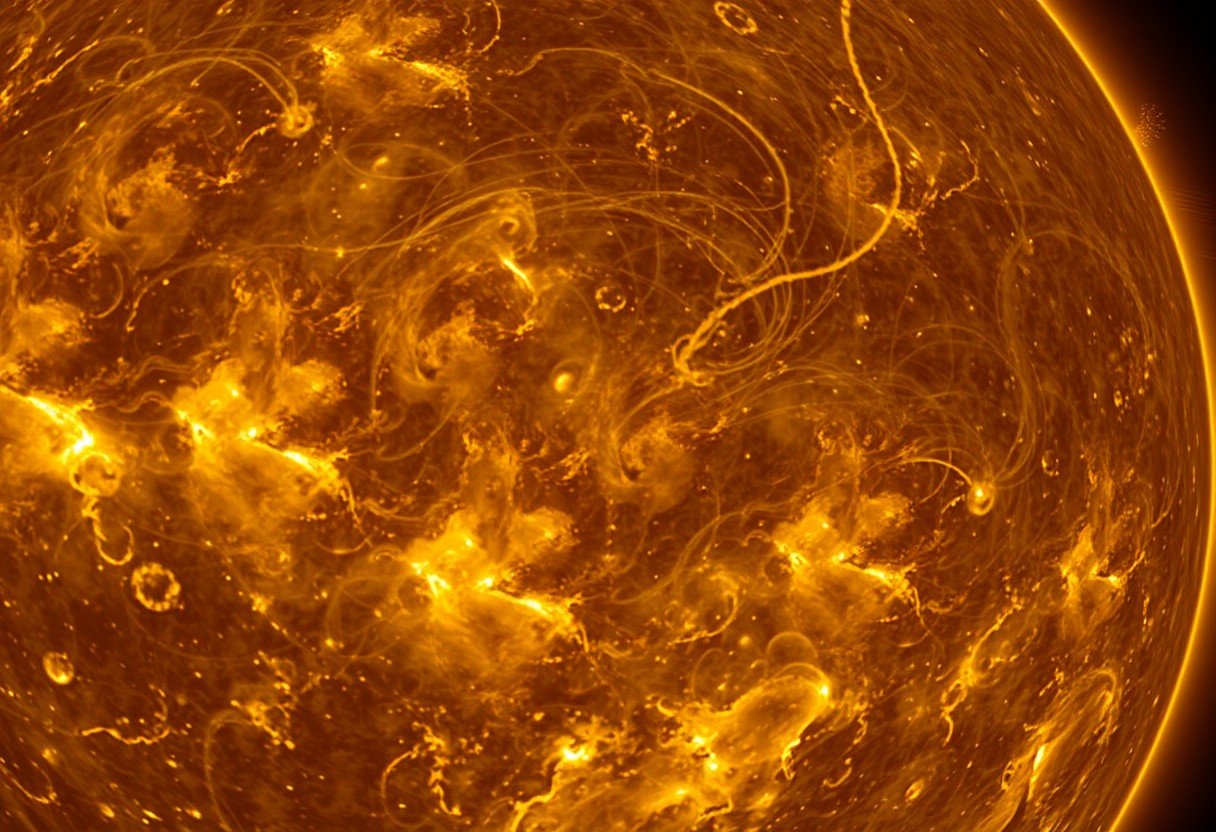Ever wonder why the summer sun at noon feels so much stronger than the winter sun? This difference in solar intensity happens because of the Earth’s 23.5-degree tilt on its axis. As our planet orbits the Sun, this tilt changes how directly sunlight hits your part of the world, leading to the distinct seasons we experience and affecting everything from temperature to day length.
The Earth’s Tilt is the Key to the Seasons
The primary reason for the change in solar intensity is not the Earth’s distance from the sun, but its axial tilt. Our planet is tilted at about 23.5 degrees, and this tilt remains pointed in the same direction as we orbit the sun.
During the summer solstice in your hemisphere, that part of the Earth is tilted toward the sun. This orientation allows the sun’s rays to strike the ground more directly, almost straight down at noon. This direct angle concentrates the sun’s energy into a smaller area, making it much more intense.
Conversely, during the winter solstice, your hemisphere is tilted away from the sun. The sunlight arrives at a much lower, more slanted angle. This spreads the same amount of solar energy over a much larger surface area, which significantly reduces its intensity and heating power.
How the Sun’s Angle Affects its Power
Think of a flashlight. If you shine it directly down on a table, you get a small, bright, intense circle of light. This is like the sun’s rays during the summer.
Now, if you tilt the flashlight and shine it at an angle, the circle of light becomes a larger, dimmer oval. The flashlight is putting out the same amount of light, but it’s spread out. This is what happens to sunlight during the winter. The lower angle of the sun means its energy is less concentrated, which is why it feels weaker and temperatures are colder.
A Shorter Journey Through the Atmosphere
The angle of the sun also determines how much of Earth’s atmosphere its rays must travel through to reach you. The atmosphere isn’t completely transparent; it scatters and absorbs some sunlight before it ever hits the ground.
During a summer noon, the sun is high in the sky. Its rays take a more direct, shorter path through the atmosphere. This means less energy is lost along the way. In the winter, the sun is lower in the sky, so its rays travel through a thicker slice of the atmosphere.
- Less Scattering: A shorter path means fewer air molecules to scatter the sunlight away.
- Less Absorption: Gases and particles in the atmosphere absorb some solar energy, and a longer path means more absorption.
- Greater Intensity: Because less energy is lost, more of it reaches the ground, resulting in higher intensity.
This atmospheric effect is why the sun can feel less intense even on a clear winter day compared to a clear summer day.
Longer Days Allow for More Heating
Another crucial factor is the length of the day. The Earth’s tilt not only affects the angle of sunlight but also how long the sun is in the sky. The summer solstice is the longest day of the year, while the winter solstice is the shortest.
More hours of daylight mean the sun has more time to heat the ground, air, and water. This prolonged exposure to sunlight allows the Earth’s surface to absorb more total energy throughout the day, contributing to warmer summer temperatures. Shorter winter days provide less time for heating and more time for cooling overnight.
| Season | Approximate Daylight (Mid-Latitudes) |
| Summer Solstice | 15 hours |
| Winter Solstice | 9 hours |
Why Your Location on the Globe Matters
The differences in solar intensity between summer and winter are not the same everywhere on Earth. Your latitude, or how far north or south you are from the equator, plays a big role.
Regions near the equator receive direct sunlight year-round. Because of this, they do not experience dramatic seasonal changes in temperature or sun intensity. The sun is always high in the sky, and days are consistently about 12 hours long.
As you move away from the equator toward the poles, the seasonal differences become much more extreme. In polar regions, the sun may stay above the horizon for 24 hours in the summer and disappear completely for months in the winter. This is why these areas have such drastic temperature swings between seasons.
Frequently Asked Questions about Solar Intensity
Why is the sun stronger in the summer?
The sun feels stronger in the summer because your hemisphere is tilted toward the sun. This causes sunlight to hit the Earth at a more direct angle, concentrating its energy and making it more intense.
Does the Earth’s distance from the sun cause seasons?
No, this is a common misconception. The Earth is actually closest to the sun in early January, during the Northern Hemisphere’s winter. The seasons are caused entirely by the Earth’s 23.5-degree axial tilt.
How much does the atmosphere reduce the sun’s intensity?
The atmosphere can significantly reduce solar intensity. When the sun is directly overhead, its rays pass through the least amount of atmosphere. When it’s lower on the horizon, its rays travel through much more atmosphere, which can scatter and absorb over 75% of its energy.
Why are days longer in the summer than in the winter?
Days are longer in the summer because the tilt of the Earth’s axis exposes your hemisphere to the sun for a longer portion of its 24-hour rotation. In winter, the tilt means your hemisphere spends less time in the sun’s light.








Leave a Comment